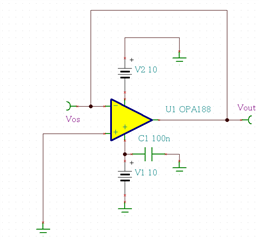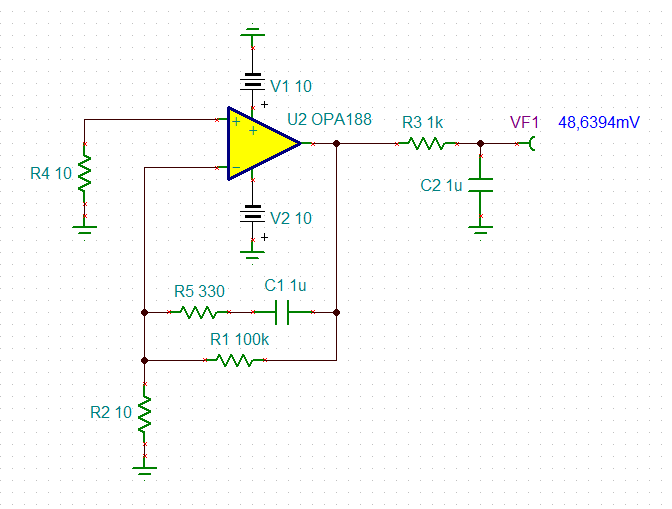I made a circuit like the one shown in the figure and actually measured it, but the offset voltage was too small to be confirmed with an oscilloscope. I would like to know if there is a measurement method that can be used with a measuring instrument that cannot measure minute values like an oscilloscope.



